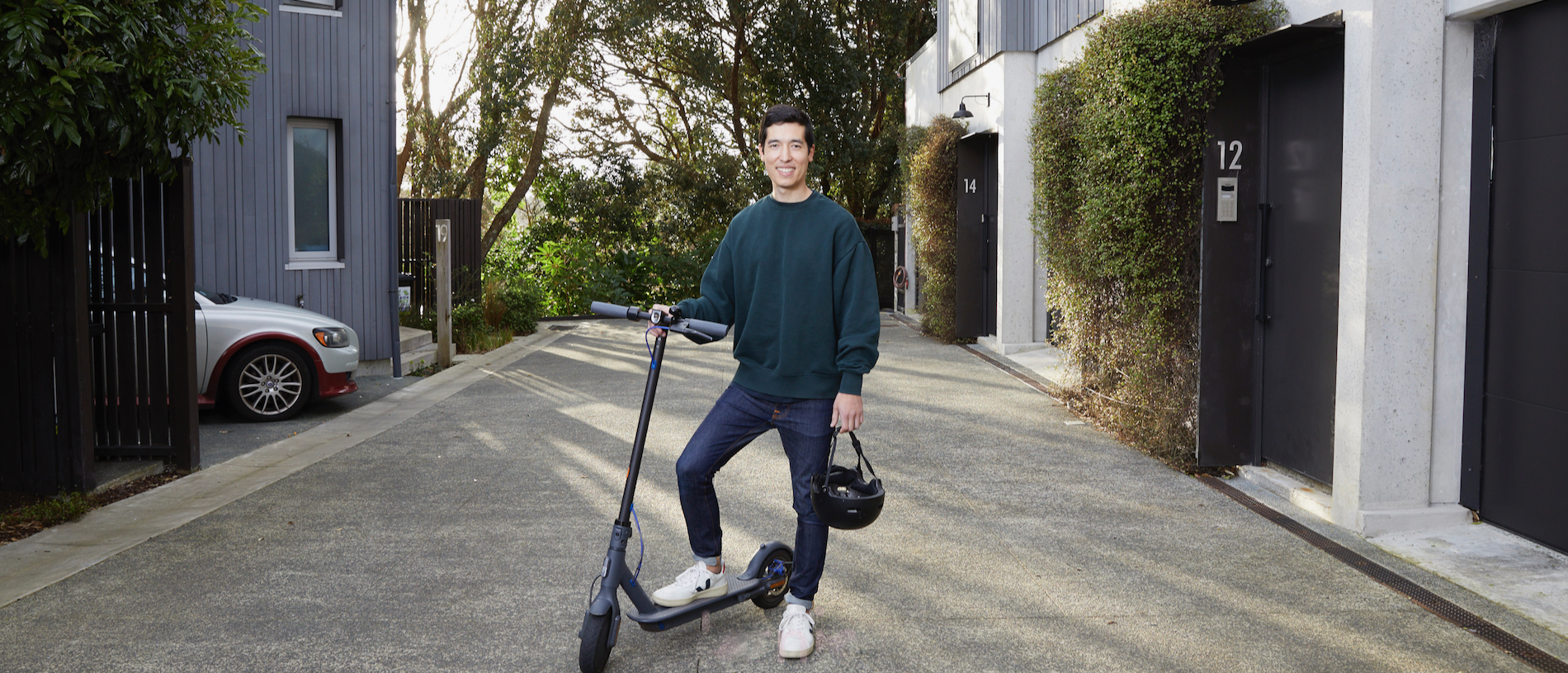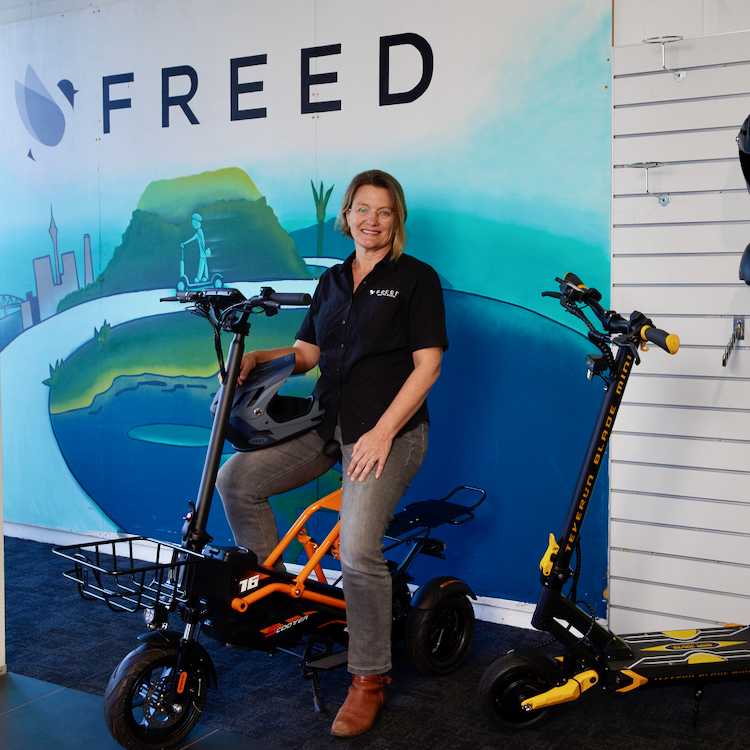
The AA’s 2023 election calls
Which transport issues should be prioritised by New Zealand’s leaders?

Efficiency, convenience and practicality compelled Blake, an inner-city Auckland resident, to opt for an e-scooter to commute.
Blake was looking for something that would get him to and from work in the city – a 3km round trip – quickly and easily. It also needed to be practical to charge and store in his city-fringe townhouse; he chose a foldable Xiaomi.
“One drawcard with an e-scooter is that it doesn’t take up as much space as a bike; it’s small and compact,” he says.
Another attraction was the fact an e-scooter allowed him to get home in as little as eight minutes – impressive, considering Auckland’s notorious commuter traffic woes – and an important factor for someone with a young family. “The fact I can say ‘I’m on my way home’ and turn up so quickly thereafter is ridiculous, really. It’s particularly great if daycare calls; it’s good to be on hand.”
As e-scooters are not required to be registered in New Zealand it’s difficult to know exactly how big the rider population is, however it’s not hard to notice the growing numbers of people zipping around town on them.
Director of New Zealand retailer Freed and scooter enthusiast Jen Hobbs says the benefits are many: they’re compact, quiet and fun. And privately-owned e-scooters are a welcome addition to Auckland roads for their positive contribution to issues around congestion and emissions.

“Commuting by e-scooter is so liberating that it can genuinely change your life,” Jen says. “But they’re not all play; more and more people are asking, could this work for me?”
Waka Kotahi is revising existing electric scooter regulations on the ins and outs of owning one, and where you can ride.
As it stands, e-scooters are legal in New Zealand and don’t require registration or a driver licence to be ridden on the road. Waka Kotahi says they must be equipped with the same features as bicycles: lights, brakes, reflectors and a bell. Jen says that for some “completely mad reason” helmets are not yet legally required but, for obvious reasons, she strongly recommends wearing one.
When on the road, you’re required to ride as near as practicable to the curb. However, this doesn’t mean you need to ride in the gutter, Jen says.
“Don’t endanger yourself. Ride defensively and considerately and be aware of your surroundings. We recommend riders wear extra lights on the handlebar and helmet to maximise visibility for other road users.”

Give parked cars enough room to open a door and be prepared to stop to let traffic pass if that keeps you safe, Jen says. If you cannot ride safely on the road, use the pavement (speed limits on footpaths is 15km/h). “And you should only use pedestrian crossings if you dismount and walk your scooter across.”
The rules vary when it comes to taking e-scooters on public transport. Trains and ferries allow it, although some ferries are introducing limits, so it pays to check and be organised in advance. Currently, e-scooters are permitted on buses at the driver’s discretion.
Most of Blake’s commute is off-road which makes him feel safe on his journey, although he’s had a few scares and now knows to approach certain areas at a slower pace, namely carparks where vehicles could be entering and exiting quickly, and when riding past bus stops, where pedestrians are likely to step out onto footpaths.
“There’s always a lot going on around town. You can’t allow yourself to daydream; it’s the same as if you’re driving. The good thing about e-scooters is you can’t be tempted to use your phone at all. You wouldn’t want to lose focus, even for a second,” Blake says.
Blake’s e-scooter is limited to 25km/h which helps to reduce potential accidents; once at work, he can store it safely and securely in onsite facilities. When parked in a public space, there’s a mobile app that disables the scooter.
Blake says many employers now offer ‘end of trip facilities’ for staff that include hair straighteners, blowdryers and hair products to incentivise commuting via alternative modes of transport.
“It’s a big selling point (for workers). You’d be mad to drive into Auckland central now; you can’t use half of Queen Street with all the roadworks and bus lanes and pedestrian-only areas.
“I know a lot of people at work who take their e-scooters on the ferry. They fold up and fit more easily on public transport or in a car than a bike does, so you could get picked up after work, or take it somewhere to go for a ride for fun,” he says.
Lithium batteries are built with numerous safeguards in place and fires are rare, however they can combust because of damage or faults. Jen Hobbs says fire prevention is completely achievable and risk can be minimised by:
This story is from the Spring 2023 issue of AA Directions magazine.